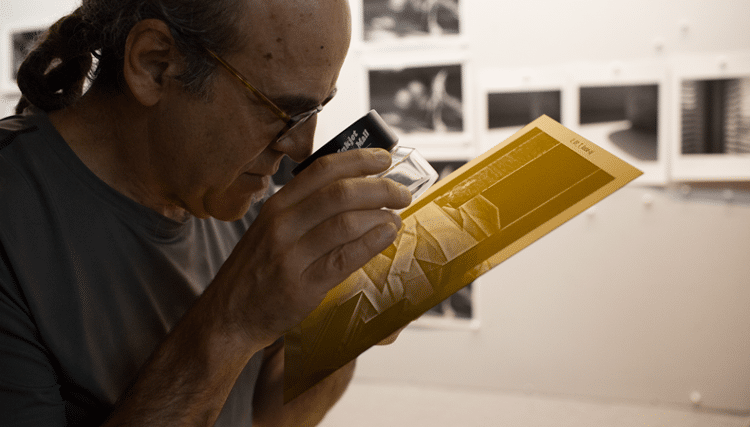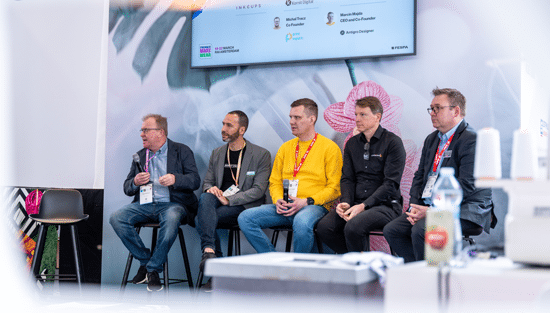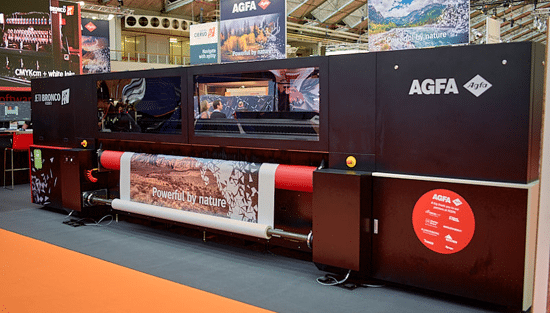A life in art: Jon Cone

Jon Cone is an innovator in print technology, but his first love is art and photography. We speak to him about how art and printing can still work together today.
“Ask any printmaker about their printmaking business, and you’ll hear that it’s a business of love,” Jon Cone says.
“If they are a real collaborative printmaker, and there’s something that a project really needs but the artist can’t afford it, the printmaker will make it happen because it’s part of their love for the medium. It’s not just a business – they won’t let a print look bad because the artist cannot finalise it. The printer will finalise it and pay those costs.
“As a result, I think most fine art printmaking studios that work with traditional mediums – screen printing, intaglio and so on – find it’s difficult to keep going.”
In Jon’s case, his work creating market-leading print technology, such as the Piezography monochromatic print system, has helped subsidise his more artistic endeavours. And what endeavours they have been: over the years, Jon has collaborated with artists such as Stanley Boxer and Norman Bluhm, and photographers such as Richard Avedon and Gregory Colbert.
“My love for this started at university, where I studied photography and printmaking,” Jon says. “I graduated in 1980 at the height of the art boom and I wanted to be a master printer. I got a job in New York city at a great place in Soho, lower Manhattan, which was the centre of the artworld at the time. We were printing for top companies – we did the overflow from the Warhol Studio, Rauschenberg.”
 Early silk screen Jon produced at university, using 21 separations and inks to create the illusion of a photograph. Credit: Jon Cone
Early silk screen Jon produced at university, using 21 separations and inks to create the illusion of a photograph. Credit: Jon Cone
Paper choice
At the age of 21, Jon was encouraged to open his own studio – Cone Editions in Port Chester, New York. Initially working with abstract painters and experimenting with different materials and traditional print methods, Cone Editions has since become synonymous with fine art inkjet printing, especially photography. Over the course of Cone Edition’s 40-plus years, Jon has attained unique insight into what’s needed for high-quality printing.
“It is very desirable to use fine art matte paper, yet most photographers are used to printing on glossy paper or semi-gloss,” says Jon. “It’s hard to get a photographer to try using fine art matte. They say they’re dull, they don’t have the darkness of the glossy, but with my Piezography system, they really can,” Jon says.
“Then it is important to choose the right paper. Really bright papers can make an expression that is very lively in the photograph. Papers that are less bright, which are more natural in their appearance of brightness, can create an expression that is a little more introspective, less flashy, where we want to look into that photograph a little longer. The tone of the paper becomes really important – far more than the texture or surface qualities.
“I think people became more attuned to paper in the early 2000s but I feel, today, the options are so varied that most photographers just don’t know what to try. Inkjet paper has also become expensive, but I think that paper is really important and if a photographer could afford it, they should try a lot of different options to find what expression it results in and what they like.”
Another significant development since the early 2000s is the method of image capture. Dedicated film-based cameras are now outdated and digital and mobile phone-based imagery is now being used.
“In the past, we had film and the gelatin silver process. With silver, images get dark very quickly and white really quickly because that’s just how silver works. But these new sensors in digital cameras and cell phones are very linear – they capture the brightest and darkest much easier than silver could, and they capture colour better. They are more like our human eye and they can see more,” Jon says.  A 13 colour screenprint of Wolf Kahn’s Red Hill, printed from 13 individual silkscreens produced using a computer. Credit: Jon Cone
A 13 colour screenprint of Wolf Kahn’s Red Hill, printed from 13 individual silkscreens produced using a computer. Credit: Jon Cone
“Photography has changed: image files that can be printed are well beyond what most inkjet printers are capable of. For example, when an Epson printer gets to the shadows, it gets dark very rapidly. But Piezography goes to black so slowly that there are details in the shadows in the image files that photographers won’t have seen until they print.”
Tough taskmasters
If Piezography is Jon’s greatest achievement technologically, his proudest accomplishments artistically are the projects he has printed. But while every printer will know a difficult customer, in the world of fine art, the collaborations can be even more highly charged.
“I was very proud to work with Richard Avedon, which happened shortly before he died. Firstly, working with him proved challenging. The project had to be archival, and it was essential that we met the colour gamut,” Jon says.
“I also overcame working with Richard himself, which was very difficult. There were days I would come in with proofs that he said were really intolerable; a lot of people would have said ‘I can’t work with him.’ But he was just a human being. He would have his good days and his bad days but I was able to go through that process with him and really make him happy with the final set of prints. I never took anything personally when he didn’t like something that I might have put a lot of time into. But it was a hard project for me to get through, so I was very proud of that.”
Another key moment was working with Gregory Colbert to produce images for his Ashes and Snow Nomadic Museum (see image below).  Gregory Colbert prints were produced with Piezography using 110” Roland printer modified to become a 12-ink printer. Credit: Jon Cone
Gregory Colbert prints were produced with Piezography using 110” Roland printer modified to become a 12-ink printer. Credit: Jon Cone
“I moved back to New York for three years to do that project, which involved 8ft x 14ft prints and a whole studio filled with artists and really talented people working on them,” Jon says.
“I had an unlimited budget to alter and make technology. What I produced there, as a printmaker, it was the ultimate job. We were not permitted to publish what we had done for that project, but those prints were seen by more people in the world than any other exhibition – 13 million people around the world got to see these prints. This is what is important,: you want your work to be seen and that was really amazing.”
Towards the future
For all Jon’s success, he believes the future of art and print, especially art printed by inkjet, may be becoming outdated.
“I was told the middle classes in America spent about $5,000 a year on art in the 1980s. I don’t believe today they spend $500,” Jon says.
“I think inkjet printing is now a vintage medium, although we’re just at the beginning of its status as a vintage medium. If you look at Epson’s year-end financial reports and you look at fine art and photography, the ink sales are not what they used to be, probably because of social media.
“I actually believe the way that fine art will enter people’s homes now will probably be via a very large screen on the wall. Someone will lease artwork, and it will be downloadable. At some point one of the three OEMs [original equipment manufacturers] will stop making fine art printers because the market for office printing or book printing is much larger than fine art and photo. In that way, I see it as having the potential to become a vintage medium. I think I lived through an era.”
For Jon personally, though, the next era looks full of potential and creative possibilities.
“In terms of my own artistic expression, I went to university, and I studied under Arnold Gassan. He said that he only wanted to see our photographs upside down because we wouldn’t have anything interesting to communicate with him until we’re 60 years old.
“Here I am. I’m 67, and I’m definitely going to find time for my own expression. It’s the right time in life. It’s an interesting age; you feel comfortable in everything. Therefore, my balance is being able to move forward making more work, my own work. Although, of course, I’m still particularly interested in collaborating with others.”
Become a FESPA member to continue reading
To read more and access exclusive content on the Club FESPA portal, please contact your Local Association. If you are not a current member, please enquire here. If there is no FESPA Association in your country, you can join FESPA Direct. Once you become a FESPA member, you can gain access to the Club FESPA Portal.
Recent news

The personal touch: visit Personalisation Experience’s SmartHub Conference 2025
Join the SmartHub Conference at Personalisation Experience next month to stay ahead of the latest tech and trends.

How to build brand trust using customer reviews
Reviews can benefit or damage your business’s reputation. From spreading the word to social proof, here is why reviews matter and what you can do to manage your customer reviews to improve your brand’s reputation.

Regulation guidance: Extended Producer Responsibility
Extended Producer Responsibility (EPR) is now in effect. What does it mean for those in the print industry? Sustainability consultant Rachel England outlines everything you need to know.

How to maximise the automation of your production workflow
Workflow automation has evolved beyond basic file prep, now encompassing job submission, prepress, and postpress. Printers automate to boost productivity, cut waste, and address skill shortages. Implementing tailored automation, from RIPs to MIS, optimises throughput and profitability, minimising human intervention.